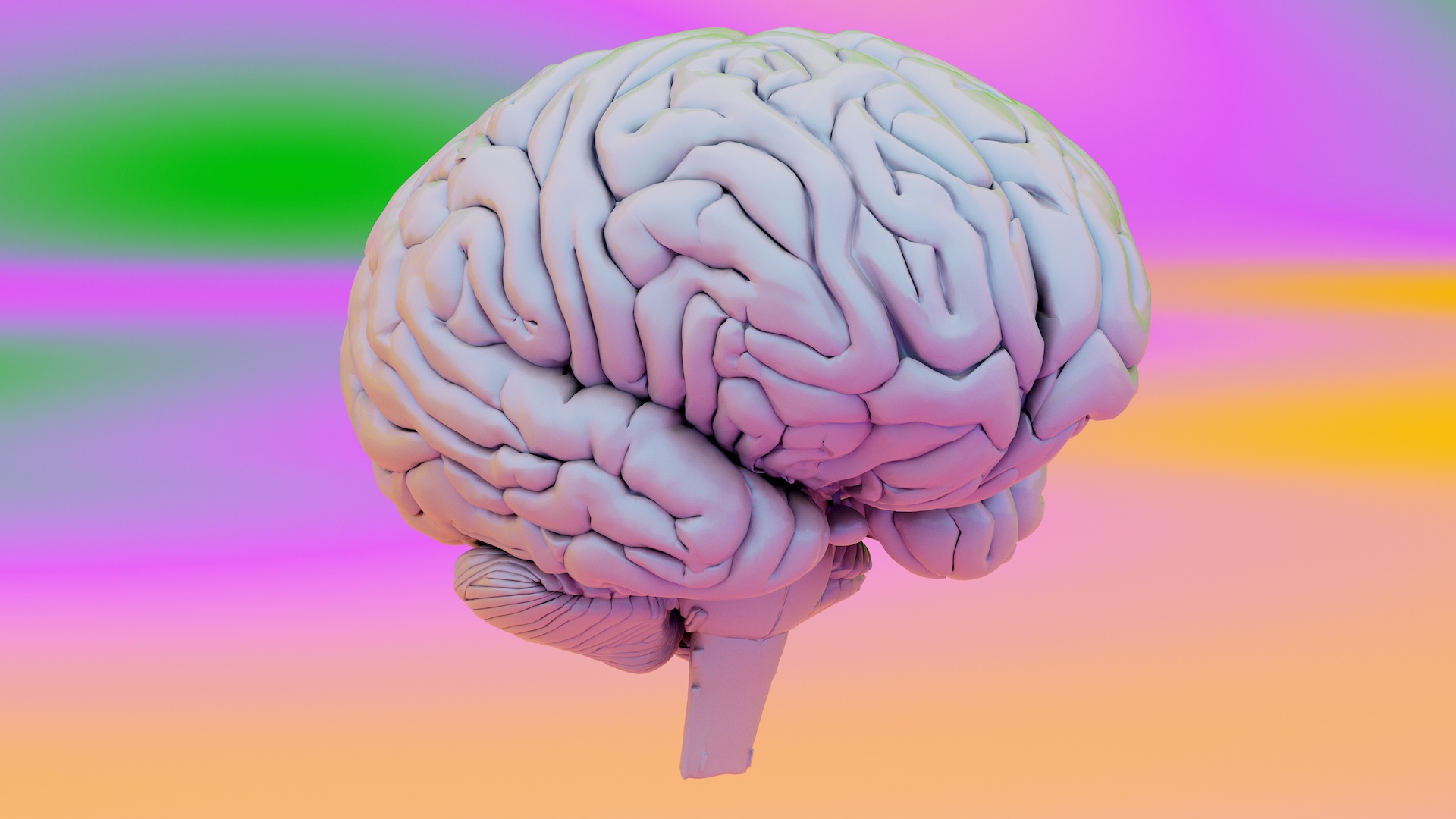
Imagination relies on an ability to differentiate between what’s real and what’s not — and now, scientists have uncovered potential brain mechanisms that make this distinction possible. These, they hypothesize, may be significant in conditions like schizophrenia, which can affect people’s perception of reality.
A paper published June 5 in the journal Neuron explored these mechanisms. Scientists know from previous research that a specific brain region — the fusiform gyrus, a large ridge that runs across two lobes of the brain — is active both when you see something in reality and when you imagine something, first study author Nadine Dijkstra, a neuroscientist at University College London, told Live Science.
“But what we found was that the activity levels in that region predicted whether or not you think something is real, irrespective of whether you see or imagine it,” she explained.
The fusiform gyrus is involved in high-level visual processing, such as identifying objects and people’s faces from their appearance. The study suggests that during imagination, the signal strength is weaker compared with during perception; this difference in signal strength enables the brain to distinguish between the two. That is, if the activity crosses a certain threshold, the brain interprets it as reality.
To reach this conclusion, the scientists used functional magnetic resonance imaging (fMRI), a technique that tracks blood flow as an indirect measure of brain activity. In a series of experiments, 26 participants were asked to look for diagonal lines on a screen with dynamic noise — like TV static — and indicate whether the lines were present. Half of the time, the lines were actually shown on the screen; the other half of the time, they weren’t.
At the same time, the participants were asked to imagine lines that either ran in the same direction as the real lines or ran perpendicular to them, depending on the round. They also reported how vivid the images that they perceived were.
Related: Can rats ‘imagine’? Rodents show signs of imagination while playing VR games
“The trick was that sometimes participants were imagining the same lines [that they saw on-screen], and sometimes they were imagining different lines,” Dijkstra said. “What we found was that when they were imagining the same lines, they would more often say that they saw real lines, even when nothing was there.”
In other words, imagining the visual that you expected to see can trick the brain into thinking it’s there.
The fMRI scans helped the researchers monitor the patterns of activity in specific parts of the brain associated with perception and imagination. The fusiform gyrus was active both when the lines were imaginary and when they were real. However, when the activity crossed a certain threshold, the study participants assumed it was real, Dijkstra said.
“In general, the activation during imagination [alone] is not strong enough to cross this threshold,” she added.
When the activity in the fusiform gyrus went up, so did the activity of the anterior insula, a region in the brain’s prefrontal cortex, which is broadly responsible for cognitive behaviors like decision-making and problem-solving. It’s almost as if the anterior insula “reads out” a reality signal from the fusiform gyrus, the researchers noted in their paper. However, the mechanism behind this connection between the two brain areas is still unclear.
One of the limitations of the study was that the researchers used really simple stimuli, which were not reflective of what people encounter in real life, Dijkstra said.
“We are now developing paradigms to include more complicated stimuli-like objects, faces or animals,” she said. “Another direction to look at is whether we can make people confuse their [imagined] imagery for perception by, for example, stimulating the brain at the right time.”
Thomas Pace, a neuroscientist at the University of the Sunshine Coast in Australia who wasn’t involved in the study, said Dijkstra and her team’s work provides a remarkably simple explanation for how we distinguish reality from mental imagery.
The study suggests “our sense of reality is a judgment call based on signal strength, and by its very design, this system can be influenced by the power of our own mind,” he told Live Science in an email. It’s a “finding that helps explain how reality monitoring can fail, and lays the foundation for understanding complex experiences like hallucinations.”
Future research will need to look at more complex stimuli, like faces, to establish how this threshold-based system operates across different types of visual processing, he said. Real-world experiences are also typically consistent across multiple senses, and align with our expectations of how events unfold in logical sequences — and such cues were omitted in the study’s focused visual task.
“Most importantly,” Pace said, “examining this system in clinical populations where reality monitoring is disrupted — such as in schizophrenia — could provide insights into both the robustness of these mechanisms and their clinical relevance.”
Brain quiz: Test your knowledge of the most complex organ in the body
Premium IPTV Experience with line4k
Experience the ultimate entertainment with our premium IPTV service. Watch your favorite channels, movies, and sports events in stunning 4K quality. Enjoy seamless streaming with zero buffering and access to over 10,000+ channels worldwide.

















